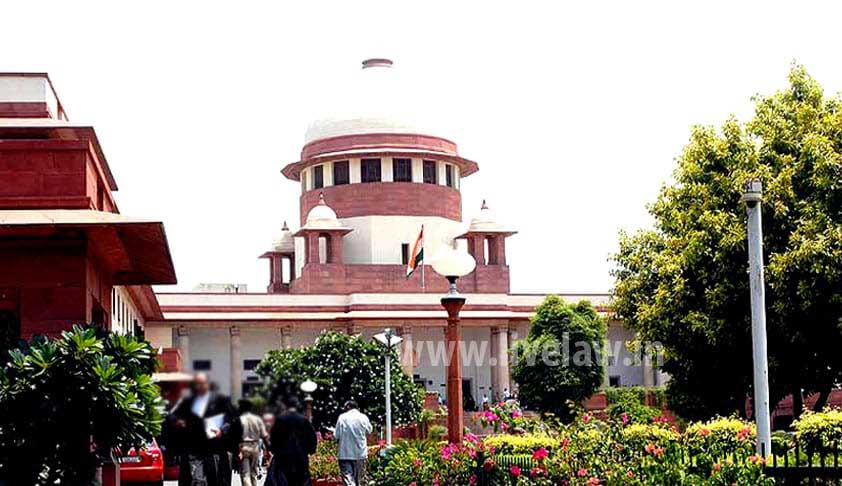Nahalchand Laloochand V. Panchali, The Most Misused Precedent By Litigants
Dr. V.V.L.N. Sastry
25 Feb 2017 10:20 AM GMT
In a 2010 judgment, in the case of Nahalchand Laloochand Pvt. Ltd. v. Panchali Co-operative Housing Society Ltd. [AIR 2010 SC 3607], a real estate company presented the argument that it is correct to sell stilt parking areas or garages as separate individual entities just like a flat, to those who do not own flats in the building and wish to use such entities as parking places. The...
In a 2010 judgment, in the case of Nahalchand Laloochand Pvt. Ltd. v. Panchali Co-operative Housing Society Ltd. [AIR 2010 SC 3607], a real estate company presented the argument that it is correct to sell stilt parking areas or garages as separate individual entities just like a flat, to those who do not own flats in the building and wish to use such entities as parking places. The Hon’ble Supreme Court judges- Justice A.K. Patnaik and Justice R. M. Lodha however,rejected this argument while stating that such independent units or flats cannot be sold to outsiders by builders/promoters since these areas are to be for a price to the purchasers of flats and the builder/promoter can only charge as towards common areas and facilities from each flat owner in proportion to the carpet area of the flat.
The judgement however, is being misconstrued by flat owners who have not purchased parking prior to the Supreme Court’s judgement of 2010. And they are in a bid to usurp the parking places purchased by co-flat owners who have paid huge amounts to the builders towards such places.Such flat owners who have not opted for purchasing parking places(hereinafter referred to as litigants)in turn, are creating problems for their co-flat owners by misinterpreting the judgement, which is to say, “even those who did not purchase parking area along with their flat are seeking a parking place by invoking this precedent.” This however, is unjust to the parking purchasers who have shelled out huge amounts to the builders to secure parking places. The argument from such litigants wanting to misuse this judgement is that, those who have paid heavy amounts towards the purchase of parking places, have done so at their own risk and have to forego their rights to such parking places.
It is pertinent to note that such litigants are fully aware that they have not paid to the builder any amount towards purchase of parking place while negotiating the purchase of a flat with the builder. It would also be relevant to state here that builders have sold such parking places at very high rates to the purchasers of such places along with flats.
The only defense for these litigants is the verdict on Nahalchand Laloochand v. Panchali by Supreme Court in the year 2010. This precedent is misused as the lower courts are not getting into the merits of this precedent, circumstances, premises, and case related obiterdicta. Hence, litigants are trying to invoke this precedent with retrospective effect, which in all likelihood, is poised to create multiple litigations and blur the exact position of the law.
Arguments- Unquoted
The Supreme Court has by default given the rights to non-purchasers of the parking, hence, invoking this precedent is the right of those who did not buy any parking from builders prior to 2010, the year of the Supreme Court Judgement. The aim of such litigants is to invoke the judgement as a precedent and if luck favors them, they can sell their flats at high premiums stating the availability of parking place, although they haven’t paid any amount for the parking place. These litigants are very much aware that the availability of parking place invariably increases the valuation of a flat.
How far are these litigants’ claims legal?
- The universal applicability of the Supreme Court judgement would come into question as the laws have been amended subsequently by the legislature in Maharashtra.
- The Confederation of Real Estate Developers’ Association of India (CREDAI), Pune branch, said that though the Supreme Court has made it categorically clear that “stilt parking/open parking” cannot be sold as it does not fall under the definition of ‘flat’ or ‘garage’, it has also stated that the builder can charge for stilt parking/open parking under common area and facilities separately and give preferential treatment to such payers.
- The entire ruling of Nahalchand Laloochand v. Panchaliis based upon the meaning of the word "garage". According to the Hon’ble Supreme Court, the area closed by three sides and above used for parking is a garage. This logic puts stilt area enclosed by less than three sides or not at all enclosed in a different footing than the area covered by three sides. Moreover, in Nahalchand Laloochand v. Panchali, the builder sold the parking spaces as independent units to outsiders not belonging to the building, hence, the judgement needs to be seen in its obiterdicta from the said perspective rather than generalizing the same.
- The intent of the legislature is not to prevent the selling of parking spaces in a building by the builders to flat purchasers or to question the legitimacy of such purchases as is evident from Maharashtra Housing (Regulation and Development) Act, 2012 in Section 9(2), which directs the builder to sell the parking space, however, the builder needs to document the same as a part of the agreement for sale.Any document evidencing a payment to flat, common areas and parking is also equivalent to an agreement whether given to purchaser either prior to agreement for sale or mentioned as a part of agreement for sale.
- Prior to the legislation in 2012, the MOFA-1963 was absent on the part of selling the parking and it was the MCS Act- 1960 through its standard bye-laws has allowed the builders to sell the parking spaces prior to formation of a society. But, after the formation of a society, a builder ceases to have the right to sell the parking spaces as the unsold parking spaces become the property of the society. Based on this builders have resorted to selling the parking spaces prior to the formation of the society, to the purchasers of the flats in the building. Here, one more point noteworthy is that using this precedent, litigants are putting even such flat owners to difficulty where the parking place has been registered along with the agreement for sale of the flat.
- Some purchasers exercised their decision to not buy parking places and restricted their ownership to their flat alone and thus had the privilege of paying lesser amount to the builder when compared to a flat owner who purchased even a parking place. Further, when a builder sold the flat and also sold the parking space prior to formation of a society, the activity is considered to be legitimate as there is a binding contract between the builder and the purchaser.
- The applicability of MCS Act – 1960 and MAOA- 1970 is after submission of the building to the provisions of these Acts, which is a decision of the flat purchasers based on the terms and conditions of agreement for sale. In such a scenario, what if, the agreement for sale stipulates a formation of a limited company for the building and such limited company gets governed under Companies Act based on the memorandum and articles of association? Hence, the enabling MCS Act or MAOA Act cannot be contradictory to the MOFA – 1963 or Maharashtra Housing (Regulation and Development) Act, 2012.
- The subordinate MCS Act or MAOA Act cannot create impediments to the purchasers of flats who buy the parking areas and such purchasers should be able to enjoy the same without any impediments.
- The persons who opted for no-parking and bought only flats at lesser prices have had their advantage and they cannot take Nahalchand Laloochand v. Panchali in their stride as the case involves those who have bought parking but have not bought a flat in the same building premises.
The facts of Nahalchand Laloochand v. Panchali are as follows:
Initially each of the flat owners had signed a declaration that the stilt parking areas/open parking places belong to the promoter who could sell them as per his wish and the society has no objection whatsoever. However, the society later argued that it is contrary to law and hence not binding.
Following this dispute, the promoter sought the court’s intervention in seeking “permanent injunction limiting the society from encroaching upon, trespassing and/or in any manner disturbing, obstructing or interfering with its possession in respect of 25 parking spaces in the stilt portion of the building”.
When the City Civil Court dismissed the suit, the developer filed a first appeal in the High Court which was also dismissed, following which the developer sought the intervention of the Supreme Court.
The Hon’ble Supreme Court, after an extensive study of the case, concluded that parking areas cannot be termed as garages or separate flats for convenience of sale as separate entities devoid of ownership of flats in the society.
Also, the Court highlighted that the word “flat” should be considered as intended. The phrase “and includes a garage“ mentioned within brackets does not include the entity ‘garage’ within the meaning of the word ’flat’.Otherwise, it should have been expressed clearly.
The Supreme Court further stated that open areas and stilt areas can be used asparking spaces, however, under MOFA, such areas cannot be treated as garage. ‘Garage’ as per MOFA would be understood by a flat owner as a structure which has a roof and walls on three sides.There was also a mention that just as a developer/promoter cannot separate out common passage/lobbies and staircases from “common areas and facilities”, so also, parking spaces also fall under the purview of “common areas and facilities”.
MOFA stipulates that the common areas and facilities have to be clearly spelt out in the advertisement as well as in the “agreement” with the flat purchaser and it is illegal to not clearly spell out these provisions. The promoter is also entitled to charge for the common areas and facilities from each flat purchaser an amount in proportion to the carpet area of the flat. Even if the promoter has not mentioned the stilt parking spaces and garages clearly, they still would be part of the “common areas and facilities”.
Conclusion
In Nahalchand Laloochand v. Panchali, the Hon’ble Supreme Court did not say that parking areas cannot be sold to the flat purchasers in the building. It only considered such selling to non-flat owners in the building and decided the case. While deciding so, it has come out with a fabulous obiter dicta that the builder while selling the carpet area of the flat also charges for the common areas, hence, there is no need to specifically sell the parking areas. However, a flat owner who opted for no-parking and bought only a flat had his benefit of lower price for his flat when compared to the purchasers of parking prior to 2010 and the litigants’ purchase price being low, they stand no chance to invoke in the interests of equity and justice Nahalchand Laloochand v. Panchali which otherwise is detrimental to the interests of those who purchase the flat along with the parking space.
 Dr. V.V.L.N. Sastry is a Researcher in Law at Walden University, U.S.A
Dr. V.V.L.N. Sastry is a Researcher in Law at Walden University, U.S.A
[The opinions expressed in this article are the personal opinions of the author. The facts and opinions appearing in the article do not reflect the views of LiveLaw and LiveLaw does not assume any responsibility or liability for the same]


